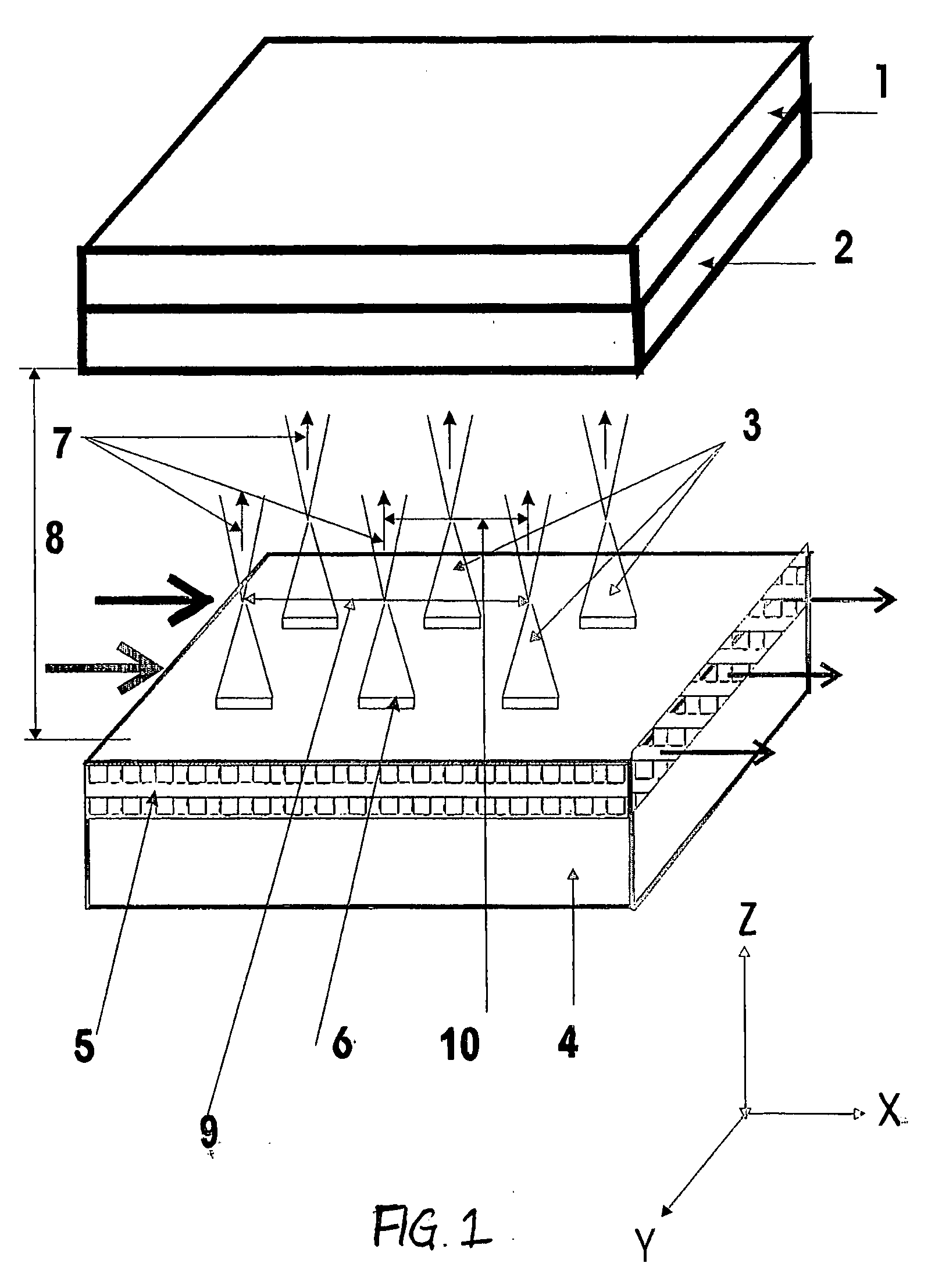Image Producing Methods and Image Producing Devices
a technology of image production and image, applied in the field of microlithography, can solve the problems of increasing stepper cost, reducing throughput, and complicated focusing system of giant projection lens, and achieve the effect of improving image resolution and simplifying equipment design
- Summary
- Abstract
- Description
- Claims
- Application Information
AI Technical Summary
Benefits of technology
Problems solved by technology
Method used
Image
Examples
Embodiment Construction
[0058]The apparatus (FIG. 1) for generating pattern on the material sensitive to used radiation, for example photoresist, includes the substrate 1 with photoresist layer coated thereon 2 and radiators array 3 located on a planar optical waveguide 5 and mounted on a unit 4 schematically shown on FIG. 1 designed for array mounting and moving. The radiator array shown in FIG. 1 as an example is realized as an array of waveguides connected to the source or sources of radiation (not shown). The waveguides are made as microcones of dielectric or semiconductor material transparent for used radiation and are coated with the layer reflecting this radiation; actually they are the near-field optical waveguides. They are located on the surface of planar waveguide 5, bringing radiation to the basis of near-field waveguides being microcones.
[0059]On the basis of microcones individually switched devices 6 realized for example as the gates regulating radiation entrance to microcones may be placed. ...
PUM
| Property | Measurement | Unit |
|---|---|---|
| diameter | aaaaa | aaaaa |
| diameter | aaaaa | aaaaa |
| distance | aaaaa | aaaaa |
Abstract
Description
Claims
Application Information
 Login to View More
Login to View More - R&D
- Intellectual Property
- Life Sciences
- Materials
- Tech Scout
- Unparalleled Data Quality
- Higher Quality Content
- 60% Fewer Hallucinations
Browse by: Latest US Patents, China's latest patents, Technical Efficacy Thesaurus, Application Domain, Technology Topic, Popular Technical Reports.
© 2025 PatSnap. All rights reserved.Legal|Privacy policy|Modern Slavery Act Transparency Statement|Sitemap|About US| Contact US: help@patsnap.com



